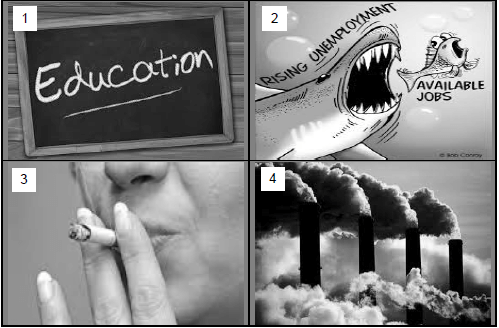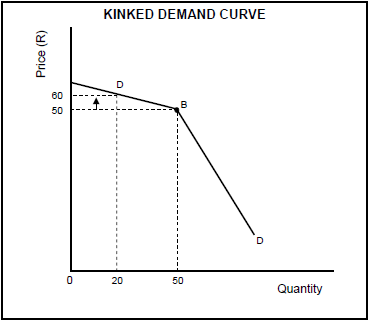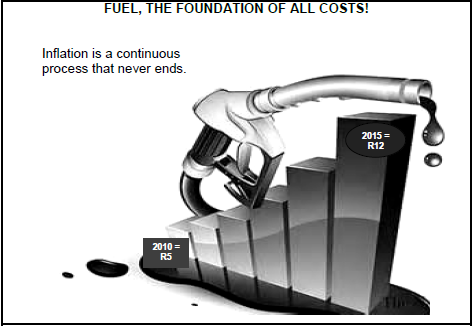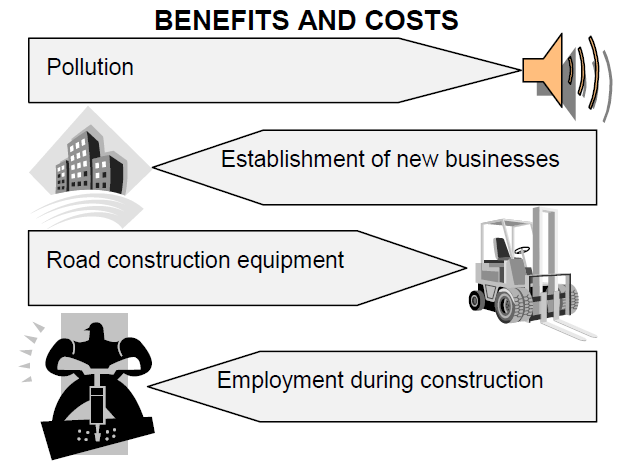ECONOMICS PAPER 2 GRADE 12 QUESTIONS - NSC PAST PAPERS AND MEMOS FEBRUARY/MARCH 2016
Share via Whatsapp Join our WhatsApp Group Join our Telegram GroupNATIONAL SENIOR CERTIFICATE
ECONOMICS P2
FEBRUARY/MARCH 2016
GRADE 12
SECTION A (COMPULSORY)
QUESTION 1 30 MARKS – 20 MINUTES
1.1 Various options are provided as possible answers to the following questions. Choose the answer and write only the letter (A–C) next to the question number (1.1.1–1.1.8) in the ANSWER BOOK, for example 1.1.9 C.
1.1.1 The supply curve of a perfect competitor is represented by that part of the MC curve that is above the … curve.
- total cost
- average variable cost
- average cost
1.1.2 The most likely barrier for a firm wanting to compete with firms in the cellphone industry, such as Vodacom, is …
- licensing.
- capital.
- technical superiority.
1.1.3Oligopolies do not have as much control over prices as monopolies because of …
- policies.
- advertising.
- competition.
1.1.4 The perfect competitor charges a price that is equal to the …
- average cost.
- marginal revenue.
- average variable curve.
1.1.5 A combination of high inflation and high unemployment is known as …
- deflation.
- hyperinflation
- stagflation.
1.1.6 The index that refers to headline inflation is called the …
- consumer price index.
- index of export prices.
- producer price index.
1.1.7Which ONE of the following is an example of a negative effect of tourism?
- Poverty
- Unemployment
- Pollution
1.1.8 The main focus of the Johannesburg Summit was on …
- hazardous waste.
- sustainable development.
- pollution. (8 x 2) (16)
1.2 Choose a description from COLUMN B that matches the item in COLUMN A. Write only the letter (A–I) next to the question number (1.2.1–1.2.8) in the ANSWER BOOK.
| COLUMN A | COLUMN B |
| 1.2.1 Economic loss 1.2.2 Duopoly 1.2.3 Community goods 1.2.4 Heterogeneous 1.2.5 Inflation targeting 1.2.6 Cultural tourism 1.2.7 Marketable permit 1.2.8 Conservation |
|
(8 x 1) (8)
1.3 Give ONE term for each of the following descriptions. Write only the term next to the question number (1.3.1–1.3.6) in the ANSWER BOOK.
1.3.1 A wage rate set by the government below which no employer may pay his/her workers
1.3.2 The period of production where only the variable factors of production can change
1.3.3 The value of the next best alternative
1.3.4 Causes damage to the environment by dumping waste material
1.3.5 Worldwide interfacing and interaction of economies with trade as the main aim
1.3.6 Tourists travelling within their own countries (6 x 1) (6)
TOTAL SECTION A:30
SECTION B
Answer any TWO of the three questions in this section in the ANSWER BOOK.
QUESTION 2: MICROECONOMICS 40 MARKS – 30 MINUTES
2.1 Answer the following questions.
2.1.1 Name TWO characteristics of monopolistic competition. (2 x 1) (2)
2.1.2 What will the effect be if one firm in a perfect market decides to increase the price of a product? (1 x 2) (2)
2.2 Study the pictures below and answer the questions that follow.
MARKET FAILURE |
2.2.1 Name the causes of market failure as depicted in pictures 2 and 3.(2 x 1) (2)
2.2.2 Explain the term market failure. (2)
2.2.3 How will a lack of information as a cause of market failure influence consumers? (2)
2.2.4 Explain how government can intervene in markets that are affected by externalities (pictures 1 and 4). (2 x 2) (4)
2.3 Study the graph below and answer the questions that follow.
2.3.1 To which market structure is the kinked curve related? (1)
2.3.2 What is the output level in the graph above? (1)
2.3.3 What would the effect be on total revenue if the oligopolist increased his price from R50 to R60? Show calculations. (4)
2.3.4 Advise the oligopolist on how to increase his market share in this particular industry. (4)
2.4 Distinguish between price leadership and cartels as forms of collusion. (2 x 4) (8)
2.5 Analyse productive inefficiency with the aid of a production possibility curve. (4 x 2) (8)
[40]
QUESTION 3: CONTEMPORARY ECONOMIC ISSUES 40 MARKS – 30 MINUTES
3.1 Answer the following questions.
3.1.1 Give TWO examples of prices that are controlled by the South African government. (2 x 1) (2)
3.1.2 What is the effect of climate change on weather patterns? (1 x 2) (2)
3.2 Study the picture below and answer the questions that follow.
3.2.1 What has happened to the fuel price since 2010? (1)
3.2.2 What will happen to employment when the cost of production increases? (1)
3.2.3 What is meant by 'Fuel, the foundation of all costs'? (2 x 2) (4)
3.2.4 Why is inflation regarded as a never-ending process? (2 x 2) (4)
3.3 Read the extract below and answer the questions that follow.
BETTER MEDICAL FACILITIES IN SOUTH AFRICA CONTINUE TO INFLUENCE MEDICAL TOURISM GROWTH There is a general increase being recorded in the number of people visiting South Africa in search of medical treatment from the country's many healthcare institutions, which are considered to have superior facilities and high levels of medical expertise. |
3.3.1 What, according to the extract, is the reason for the growth in the tourism industry? (2)
3.3.2 Explain the term tourism. (2)
3.3.3 Why is South Africa such a popular holiday destination? (2 x 1) (2)
3.3.4 How will the economy benefit from an increase in the number of medical tourists coming to South Africa? (2 x 2) (4)
3.4 Explain how wages and exchange rates can lead to cost-push inflation. (2 x 4) (8)
3.5 What is the impact of indigenous knowledge within the South African context on tourism? (4 x 2) (8)
[40]
QUESTION 4: MICROECONOMICS AND CONTEMPORARY ECONOMIC ISSUES 40 MARKS – 30 MINUTES
4.1 Answer the following questions.
4.1.1 Name TWO World Heritage Sites in South Africa. (2 x 1) (2)
4.1.2 What is the effect on a business if the average cost is more than the average revenue? (1 x 2) (2)
4.2 Study the data below and answer the questions that follow.
| COST-BENEFIT ANALYSIS Due to floods, many roads were washed away. The government is considering building a new road which would cost R100 million. A tollgate will be installed to offset some of the cost. In addition, external costs and benefits would have to be taken into account in making a final decision. | BENEFITS AND COSTS
|
4.2.1 Identify ONE private cost and ONE external benefit from the data above. (2 x 1) (2)
4.2.2 Explain the term cost-benefit analysis. (2)
4.2.3 What alternative measure could the government consider instead of building a new road? (2)
4.2.4 Should the government proceed with the building of this road? Motivate your answer. (4)
4.3 Study the extract below and answer the questions that follow.
INFLATION TARGETING IN SOUTH AFRICA South Africa has successfully pursued an inflation targeting monetary policy since February 2000. The policy has ensured a stable and sustainable economy. |
4.3.1 What is the current inflation target range? (2)
4.3.2 What is the main purpose of the South African inflation targeting policy? (2)
4.3.3 How can lower interest rates benefit the South African economy in the short term? (2)
4.3.4 How successful, in your opinion, was the Reserve Bank in meeting its inflation target? (2 x 2) (4)
4.4 Distinguish between economic profit and normal profit in the perfect market. (2 x 4) (8)
4.5 What is the impact of inflation on investors and savers? (4 x 2) (8)
[40]
TOTAL SECTION B: 80
SECTION C
Answer any ONE of the two questions in this section in the ANSWER BOOK.
Your answer will be assessed as follows:
| STRUCTURE OF ESSAY | MARK ALLOCATION |
| Introduction | Max. 2 |
Body Additional part: Give own opinion/Critically discuss/Evaluate/Critically evaluate/Draw a graph and explain/Use the graph given and explain/ Complete the given graph/Calculate/Deduce/Compare/Explain/ Distinguish/Interpret/Briefly debate/How?/Suggest |
Max. 26 Max. 10 |
Conclusion
| Max. 2 |
| TOTAL | 40 |
QUESTION 5: MICROECONOMICS 40 MARKS – 40 MINUTES
The existence and survival of any business depend on how they are conducting themselves.
- Compare the market structure of a monopoly with that of a perfect competitor. (26 marks)
- Draw a clearly labelled graph indicating the shut-down point for the perfect competitor. Briefly explain why a business will stop producing goods at this point. (10 marks)
[40]
QUESTION 6: CONTEMPORARY ECONOMIC ISSUES 40 MARKS – 40 MINUTES
The current levels of pollution and environmental degradation are too high. This affects the ability of the environment to survive its use for economic activities.
- Discuss government's attempts (interventions and control) to ensure the sustainability of our environment. (26 marks)
- In your opinion, how effective are pollution control measures in South Africa? (10 marks)
[40]
TOTAL SECTION C:40
GRAND TOTAL:150



